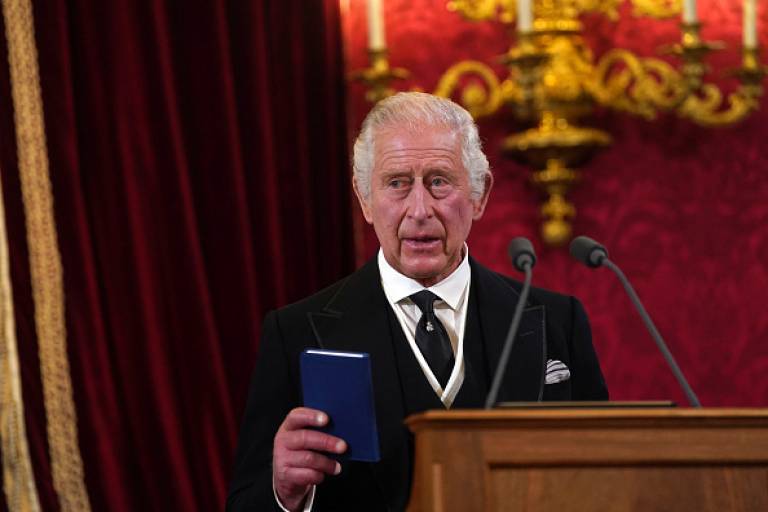New Reports: King Charles’s Accession and Coronation
23 October 2022
Today the Constitution Unit is publishing revised editions of two reports, on the coronation of Charles III, and the accession and coronation oaths.

The UK is the only monarchy in Europe to retain a religious coronation. Kings and Queens have been anointed with holy oil and crowned in Westminster Abbey in a ceremony which goes back 1000 years. But although ancient, the tradition is constantly evolving. In describing every coronation since that of George IV in 1821, our report The Coronation of Charles III shows how much the ceremony has changed – and how much it needs to change, compared with the Queen’s coronation in 1953.
In 1953 the UK still had a global empire. The armed forces numbered over 850,000; now they are less than 150,000. In the grand procession from the Abbey, nearly three miles long, more than 40,000 troops took part, with 24 military bands. The subsequent naval review at Spithead involved 190 ships. 8250 guests attended the coronation, in stands erected inside the Abbey several storeys high; the largest single group were hereditary peers and their wives. The coronation service lasted three hours: to signify the conferment of God’s grace, the Queen was anointed with holy oil, invested with symbols of authority, received homage and took communion.
The UK no longer has the capacity to mount anything like this spectacle. King Charles’s coronation will inevitably be smaller, and shorter: on the scale of the Queen’s funeral or less. The church will want to retain the eucharistic rite, but the homage could be dropped, with a separate event in Westminster Hall or on Horse Guards Parade for different groups in civil society to show their allegiance. Planning the coronation will not be easy, with the new King, the government and the church all having an interest. The monarchy is a symbol of national unity, and the coronation will define not just royalty but British identity. The challenge is how best to represent that identity in all its 21st century diversity.
This is not helped by the statutory requirement on the new monarch to take three religious oaths. These are the Scottish oath, to uphold the Presbyterian church in Scotland; the Accession Declaration oath, to be a faithful Protestant; and the coronation oath, which includes promising to uphold the rights and privileges of the Church of England. These oaths originally date from 1689-1707, when Catholic Europe was seen as an existential threat. The UK faces many serious threats, but Catholicism is no longer one of them. Our report Swearing in the new King: the Accession and Coronation Oaths argues that in our more secular and pluralist society, the oaths need to be revised and updated; or dropped altogether.
Because the oaths are statutory, any significant revision would require fresh legislation; as would their repeal. That seems unlikely before Charles’s coronation or his first state opening of parliament. But to be in time for the next accession, of Prince William, legislation would need to be passed during the present reign of King Charles. Fresh legislation could adapt each oath to its context. In a radical reformulation, the Scottish oath could become an oath about the Union; the Accession Declaration, traditionally made before parliament, could become an oath to uphold the constitution and our laws; and the coronation oath, in a ceremony watched by millions, could become an oath made to the people.
Swearing in the new King: the Accession and Coronation Oaths
Read more about the Constitution Unit's work on the Monarchy
 Close
Close

